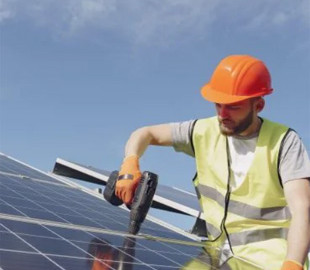Due to low prices in China, a huge number of stations are thrown into landfills, many of which may still be useful.
p>
In Australia, old solar panels are recycled, extracting precious metals: silver and copper. More about what treasures are contained in the old equipment, reports the tabloid The Guradian.
Photovoltaic plants that are no longer capable of generating electricity are being dismantled in a 50-metre hangar at Pan Pacific Recycling south of Brisbane. Workers remove the wires and aluminum components from them, and then the panels are crushed and processed into plastic, glass, silicon, silver, copper, so that nothing goes to waste.
Pan Pacific Recycling currently recycles 30,000 panels a year and hopes to increase volumes to 240,000. However, the recycling plant's capacity is only a fraction of the 1.2m solar panels already coming off rooftops in Queensland alone.
Robin Cowie, program manager for governance at the Smart Energy Council, says that until recently 60-70% of panels removed from rooftops and solar farms in Australia were sent overseas for the secondary market. However, four weeks ago, demand for old equipment in Australia completely dried up. The cost of new panels made in China has dropped so much that the old ones just can't compete.
“China has tremendous capacity for panels. They have about 1.2 terawatts of panel capacity. They're currently using about 598 gigawatts of that capacity, and that's really driving panel prices down,” — said Robin Cowie.
Solar panels have become cheaper in Australia thanks to government programs. Households can afford to change them much earlier, before they completely expire, for models that generate more electricity for the same area. Thus, panels capable of working for 20-30 years are no longer needed after 10-12 years.
200% Deposit Bonus up to €3,000 180% First Deposit Bonus up to $20,000Australia is the world leader in the installation of solar panels on roofs, 10 times ahead of many other countries. According to Robin Cowie, about 90 million panels have already been installed. And 90% of them will end up in landfills when they fail or become obsolete.
It would seem that this is good for consumers, but the old panels have to be simply thrown away, which generates a huge amount of very specific waste. Australia will need a place to dispose of millions of panels. Most states accept them in landfills because it is much cheaper than recycling.
As sustainability consultant James McGregor noted, many of the discarded panels are fully functional and can last at least another 15 years. According to his estimates, by 2032 Australia may throw out solar power plants with a potential generation of about 8 GW. Faulty panels containing critical minerals will also be thrown away — copper and silver, necessary for the transition to renewable energy — which can be restored by recycling.
James McGregor founded Second Life Solar, a start-up that is working with the New South Wales Environment Agency and the CSIRO to demonstrate the potential of reusing such equipment. They recently completed a 100kW project at a recycling plant in Wagga Wagga, New South Wales, which consisted entirely of used panels sent there for recycling.
“The cost of this solar panel can be about $1 in terms of recycling. If I take the same 300-watt solar panel and expose it to the sun for a year, it will generate $117 worth of electricity, if you take the average cost,” — calculated the businessman.
As Robin Cowie stated, no one expected that people would decommission the panels so quickly. It is not only about a large amount of waste — in 10-15 years, manufacturers will face a critical shortage of materials.
Pan Pacific Recycling has found a place to sell all the materials extracted from old panels: not only silver, copper and aluminum, but also glass, silicon and plastic. However, even so, the company suffers losses, processing costs it 10-15 dollars per panel. To prevent this, a national management program is needed that can maximize recycling and reuse while reducing emissions to landfill.

